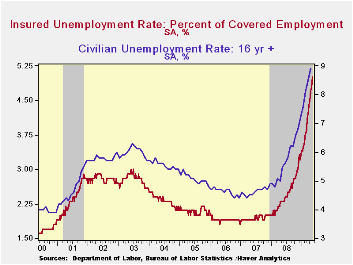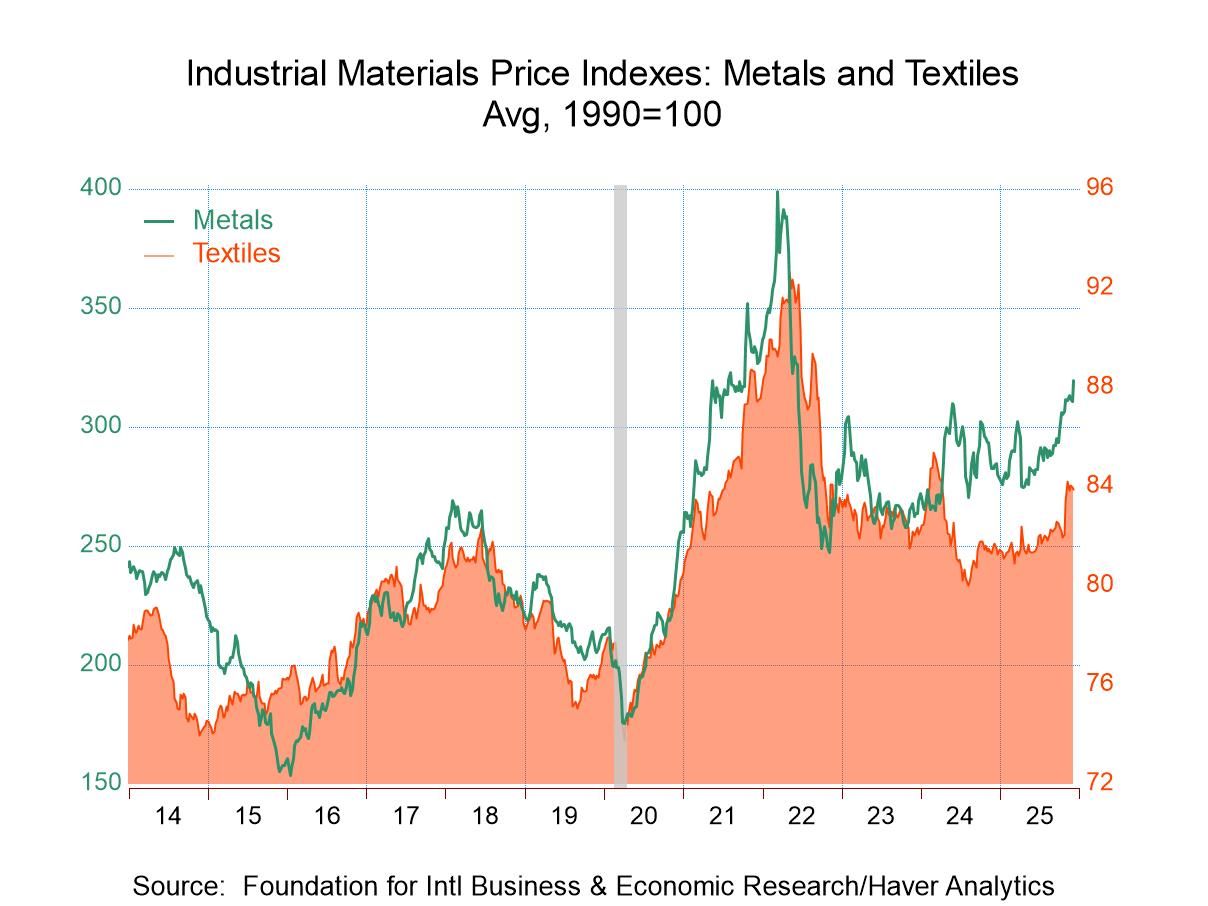 Global| May 21 2009
Global| May 21 2009U.S. Continuing Claims For Unemployment Insurance Reach Another Record While Initial Claims Dip
by:Tom Moeller
|in:Economy in Brief
Summary
Job creation remains unambiguously weak even as the latest figures on U.S. initial claims gave another indication of tenuous improvement. Jobs weakness is evident in continuing claims for unemployment insurance, which provide an [...]

Job creation remains unambiguously weak even as the latest figures on U.S. initial claims gave another indication of tenuous improvement. Jobs weakness is evident in continuing claims for unemployment insurance, which provide an indication of workers' ability to find employment. Signaling greater inability to secure work, they increased to another record high of 6,662,000, more than twice the year ago level. The series dates back to 1966. Further indicating that the job market remains weak, the four-week average of continuing claims also rose to another record of 6,480,500.
The lack of hiring continued to push the insured unemployment rate higher to 5.0%. That level was more than double last April and the highest level since 1983. During the last ten years there has been a 93% correlation between the level of the insured unemployment rate and the overall rate of unemployment published by the Bureau of Labor Statistics.Clearly, the latest weekly figure understates labor market distress in some states. The highest insured unemployment rates in the week ending May 2 were in Oregon (7.4 percent), Michigan (6.9), Puerto Rico (6.6), Nevada (6.4), Pennsylvania (6.3), Wisconsin (6.2), Idaho (6.0), California (5.6), Alaska (5.5), New Jersey (5.4), and North Carolina (5.4).
A sign of tenuous improvement in the labor market was the fall in initial claims for unemployment insurance, down a modest 12,000 to 631,000. That followed an upwardly revised gain during the prior week. Though still relatively high, initial claims are down from their March high of 674,000. The four-week average of claims, which smoothes out some of the volatility in the weekly numbers, ticked down to 628,500, still near the lowest level since mid-February. The Consensus expectation was for 630,000 claims last week.
The Labor Department indicated that the largest increases in initial claims for the week ending May 9 were in Michigan (+16,817), North Carolina (+3,783), Virginia (+2,871), Kentucky (+2,768), and Pennsylvania (+2,444), while the largest decreases were in California (-10,052), Wisconsin (-1,691), Kansas (-1,415), Oklahoma (-1,084), and Washington (-843).
The latest initial claims figures cover the survey week for May nonfarm payrolls and claims fell 14,000 (-2.2%) from the April survey period. For April, a modest increase in initial claims was accompanied by a 539,000 decline in nonfarm payrolls. During the last ten tears there has been an 87% negative correlation between the level of initial claims and the change in nonfarm payrolls.
The unemployment insurance claims data is available in Haver's WEEKLY database.
The minutes from the latest meeting of the Federal Open Market Committee are available here.
| Unemployment Insurance (000s) | 05/16/09 | 05/09/09 | 05/02/09 | Y/Y | 2008 | 2007 | 2006 |
|---|---|---|---|---|---|---|---|
| Initial Claims | 631 | 643 | 605 | 68.7% | 420 | 321 | 313 |
| Continuing Claims | -- | 6,662 | 6,587 | 117.6% | 3,342 | 2,552 | 2,459 |
Tom Moeller
AuthorMore in Author Profile »Prior to joining Haver Analytics in 2000, Mr. Moeller worked as the Economist at Chancellor Capital Management from 1985 to 1999. There, he developed comprehensive economic forecasts and interpreted economic data for equity and fixed income portfolio managers. Also at Chancellor, Mr. Moeller worked as an equity analyst and was responsible for researching and rating companies in the economically sensitive automobile and housing industries for investment in Chancellor’s equity portfolio. Prior to joining Chancellor, Mr. Moeller was an Economist at Citibank from 1979 to 1984. He also analyzed pricing behavior in the metals industry for the Council on Wage and Price Stability in Washington, D.C. In 1999, Mr. Moeller received the award for most accurate forecast from the Forecasters' Club of New York. From 1990 to 1992 he was President of the New York Association for Business Economists. Mr. Moeller earned an M.B.A. in Finance from Fordham University, where he graduated in 1987. He holds a Bachelor of Arts in Economics from George Washington University.






